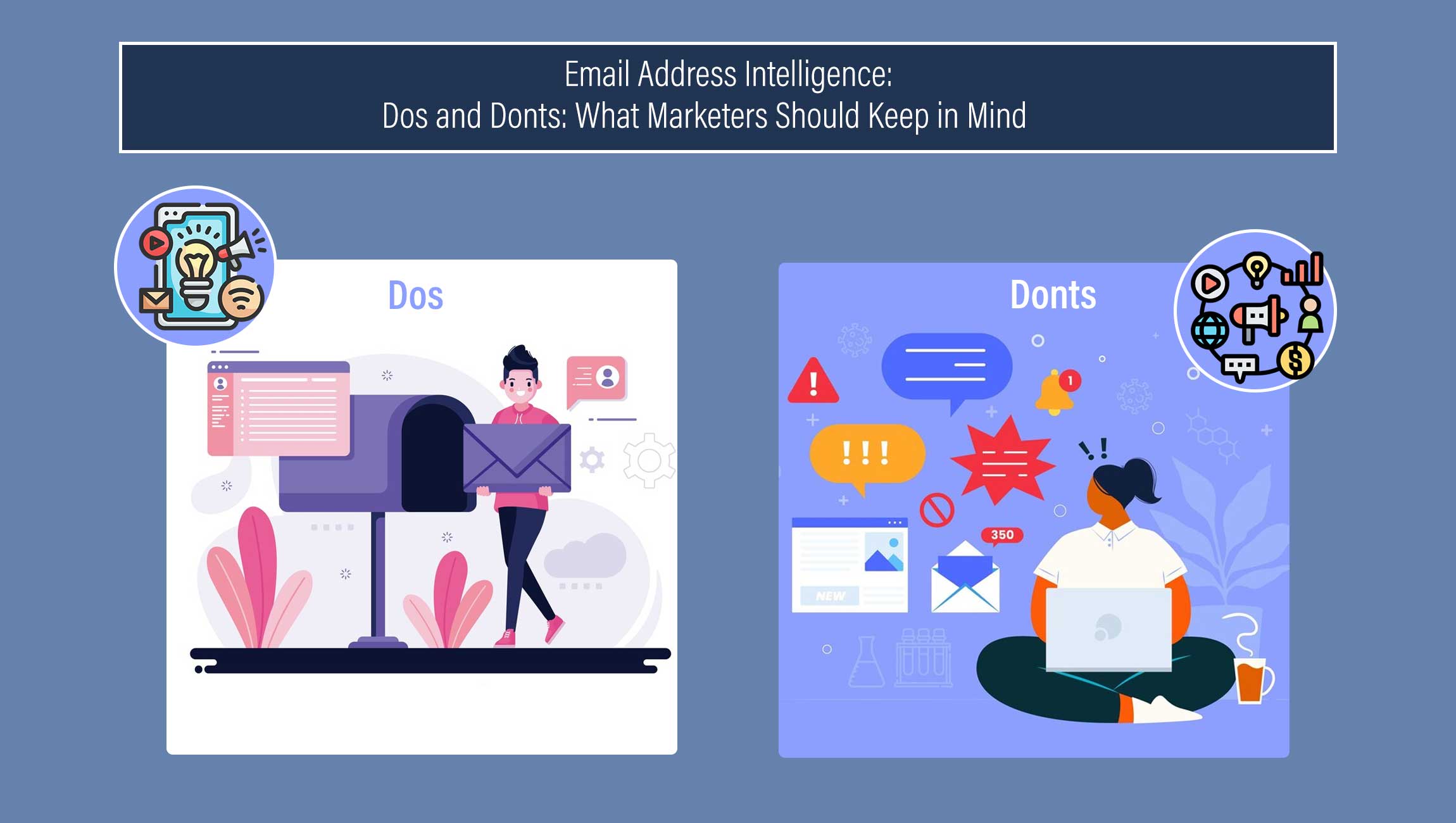Originally Posted on MarTech Series by MTS Staff Writer

In the digital age, where data is a prized asset, Email Address Intelligence emerges as a powerful tool for businesses. An email address is much more than just a way to reach out to someone. It’s like a doorway that leads to a lot of useful details about a possible customer. This kind of info helps businesses sort their audience into different groups, make their marketing more personal, and even guess what a customer might do next.
By analyzing various data points associated with an email address, such as engagement history or social media activity, businesses can gain actionable insights. These insights enable more targeted and effective communication strategies, thereby increasing both engagement and conversion rates.
As we navigate a landscape where personalized marketing is not just preferred but expected, Email Address Intelligence stands as a critical component for achieving business success.
Mastering the Art of Email Address Intelligence: Best Practices and Common Mistakes
In the fast-paced world of digital marketing, Email Address Intelligence has become an invaluable asset for understanding customer behavior. But to really get the most out of this tool, you’ve got to know how to use it properly. Let’s look at the smart moves and mistakes that can really affect how well you use Email Address Intelligence.
Dos:
- Segment Your Audience: Utilize Email Address Intelligence to categorize your customers based on various factors like interests or past interactions. This enables more focused and effective marketing campaigns.
- Personalize Content: Tailor your email content to individual recipients based on the insights you’ve gained. Personalization enhances engagement and increases the likelihood of conversion.
- Monitor Engagement Metrics: Pay attention to key performance indicators such as open rates and click-through rates. These metrics will help you fine-tune your campaigns for better results.
- A/B Test Campaigns: Don’t hesitate to experiment. Use A/B testing to determine which email formats, subject lines, or types of content resonate most with your audience.
Don’ts:
- Overwhelm with Emails: Sending too many emails can irritate your audience and lead to unsubscribes. Use the intelligence you’ve gathered to find the right balance in email frequency.
- Ignore Privacy Concerns: Be mindful of privacy regulations like GDPR. Always get explicit consent from individuals before using their email addresses for data collection and analysis.
- Rely Solely on Automation: Automated tools are useful but not foolproof. Always cross-check the data and insights to ensure they align with your broader business objectives.
- Neglect the Customer Journey: Email Address Intelligence isn’t just about the first touchpoint. Consider the entire customer lifecycle, from initial awareness to long-term loyalty, to truly maximize engagement.
Marketing Technology News: MarTech Interview with Chris Koehler, CMO @ Twilio
Unlocking the Power of Email Address Intelligence: Strategies Marketers Are Using to Win
In today’s hyper-connected world, Email Address Intelligence has become a game-changer for marketers. This tool goes beyond basic contact information, offering a treasure trove of insights into customer behavior and preferences. Let’s explore the innovative ways marketers are harnessing the power of Email Address Intelligence to drive success.
1. Audience Segmentation:
Marketers are using Email Address Intelligence to divide their audience into specific groups based on various criteria such as purchase history, geographic location, or engagement levels. This enables them to send highly targeted emails that resonate with each segment.
2. Personalized Campaigns:
Gone are the days of one-size-fits-all emails. Marketers are leveraging the data associated with email addresses to create personalized campaigns. From tailored product recommendations to individualized discount offers, personalization is elevating customer engagement and boosting conversions.
3. Optimizing Send Times:
By analyzing engagement metrics like open and click-through rates, marketers are identifying the best times to send emails. This ensures that messages are more likely to be seen and acted upon, thereby increasing the effectiveness of email campaigns.
4. Retargeting Strategies:
Marketers are using Email Address Intelligence to fuel their retargeting efforts. If a customer abandons a shopping cart, for instance, a well-timed and relevant email can nudge them toward completing the purchase.
5. Enhancing Customer Journeys:
Understanding the customer’s journey is crucial for long-term engagement. Marketers are using Email Address Intelligence to map out these journeys, identifying key touchpoints and opportunities for upselling or cross-selling.
6. A/B Testing:
Data-driven marketers are constantly experimenting to find what works best. By using A/B tests on different email elements like subject lines or call-to-action buttons, they’re continually refining their strategies based on real-world data.
7. Compliance and Trust Building:
In an age where data privacy is a hot topic, marketers are using Email Address Intelligence to ensure compliance with regulations like GDPR. This not only protects the company but also builds trust with the audience.
8. Real-Time Analytics:
The use of real-time analytics allows marketers to make quick adjustments to their campaigns. If an email is not performing as expected, immediate changes can be made to improve outcomes.
Conclusion
Email Address Intelligence offers a plethora of opportunities for targeted marketing, but it comes with its own set of challenges. By adhering to these best practices and steering clear of common mistakes, businesses can fully leverage this powerful tool for sustained success. From audience segmentation and personalization to compliance and real-time analytics, the strategic use of this intelligence can set the stage for more effective and engaging marketing efforts.
Marketing Technology News: Creating Engaging Ad Formats for the Modern Consumer






